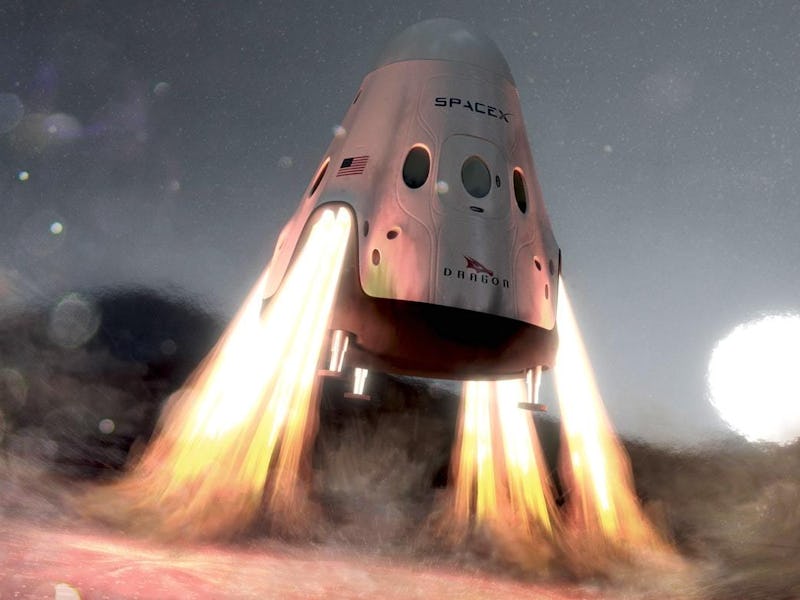SpaceX’s Red Dragon mission to Mars could mark a lot of firsts when it comes to space exploration, but one of the coolest new things about the whole project is a fancy, incredibly cool-sounding way to land on the planet’s surface: Supersonic retropropulsion.
“This has never been done before,” said Phil McAlister, NASA’s director of commercial spaceflight development in a Wednesday teleconference about the agency’s collaboration with SpaceX. “Putting a large mass into the mars atmosphere using supersonic retropropulsion.”
Typically, when a spacecraft approaches a planet, it’s going incredibly fast, and it needs to have the ability to slow down before touching down, otherwise — kablooey! — it’ll crash into the surface and be nothing more than a smoldering mass of wreckage. NASA’s Curiosity mission to Mars slowed down for an easier landing by firing its rockets towards the surface. This technique is called subsonic retropropulsion.
Supersonic retropropulsion, as you may have guessed, is similar except for one crucial difference: The spacecraft will fire its rockets while moving faster than the speed of sound. This allows the craft to ditch the parachute that its subsonic brethren use to slow down, making for a lighter and faster trip.
This method is not without its complications. At supersonic speeds, the thrust from the rockets could cause dangerous levels of turbulence, or end up going faster due to the disturbance of the resulting shock wave.
This is what Red Dragon will look like if successfully lands.
During Wednesday’s call, McAlister said testing this technology is on of the reasons why Red Dragon’s primary mission is just to land on mars. “If they do that – just that – this will be a huge success,” he said. SpaceX, of course, would like to do more following a successful landing. “But really they’re just looking for the data and a technology demonstration of the supersonic retropropulsion in the mars atmosphere.”
It’ll be an important test. One of the reasons NASA is working with SpaceX is to have access to the data from this test “at least a decade sooner at a fraction of the cost to NASA.”
“Every single candidate architecture EDL [entry, descent, and landing] we have for the Mars human exploration relies to some extent on supersonic retropropulsion,” McAlister said. “So this is a key first step for us.”
